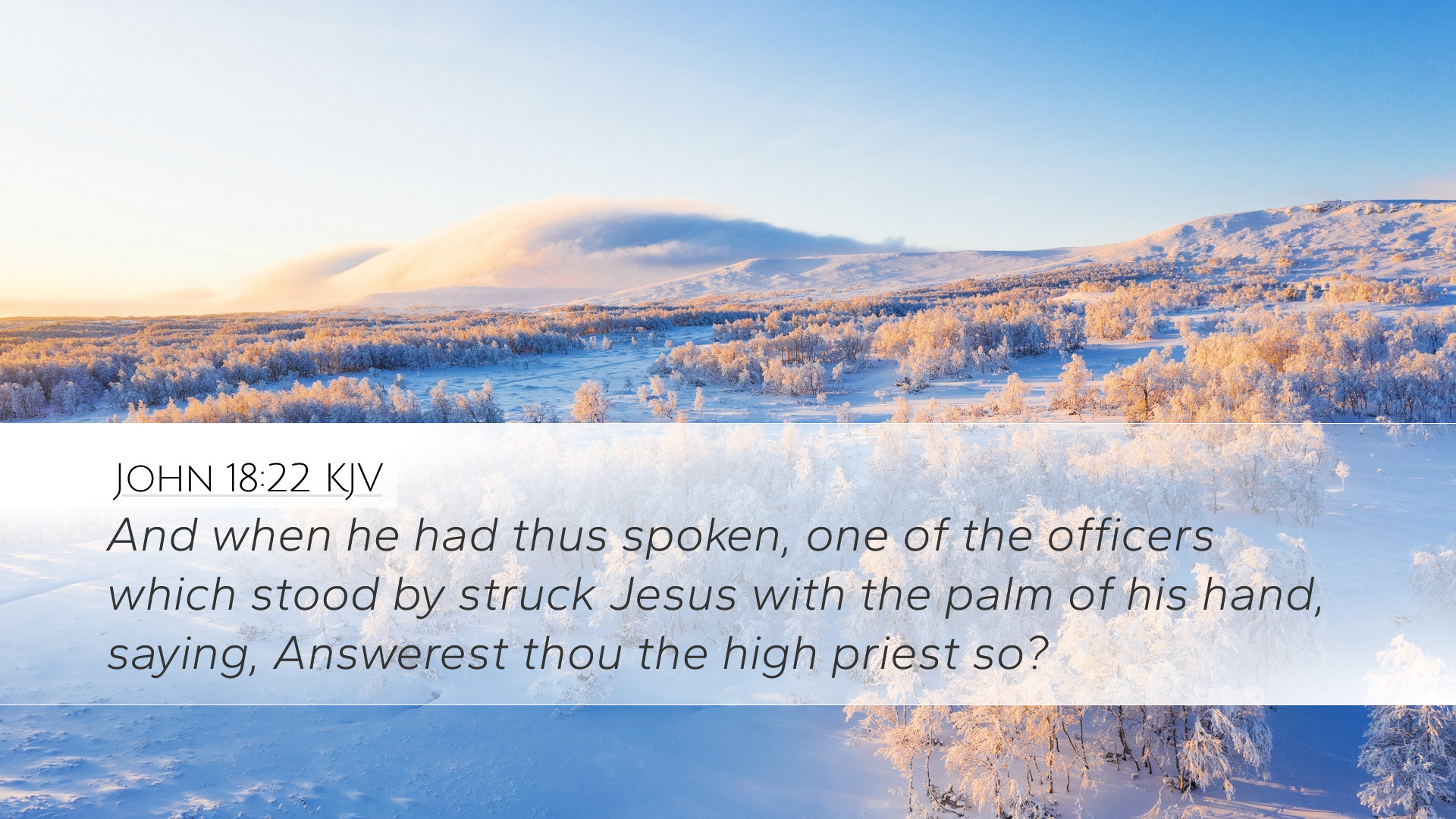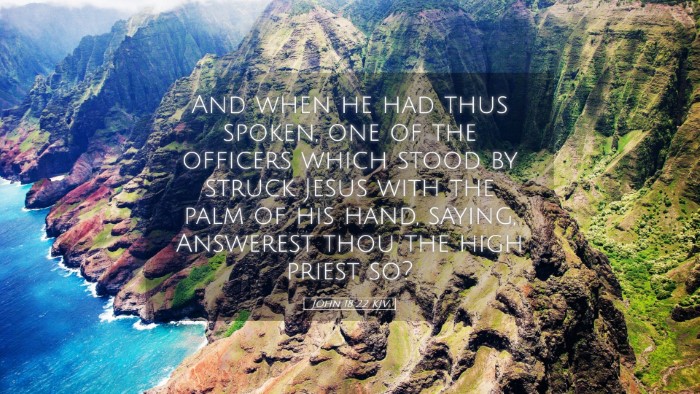Commentary on John 18:22
John 18:22 states: "And when he had thus spoken, one of the officers which stood by struck Jesus with the palm of his hand, saying, Answerest thou the high priest so?" This moment encapsulates the tension of Jesus' trial, portraying both the mockery of authority and the fulfillment of biblical prophecy.
Contextual Overview
This verse occurs during the events leading to the crucifixion of Christ, which the Gospel of John elaborates on in great detail. The setting is the high priest's courtyard, where Jesus is being interrogated. This passage reveals not only the physical abuse Jesus suffered but also highlights the spiritual ignorance and moral blindness of the officials involved.
Insights from Public Domain Commentaries
-
Matthew Henry's Commentary:
Henry emphasizes the injustice present in this scene, pointing out that the officer's action reflects the great moral depravity of those tasked with upholding the law. He notes that Jesus, despite being struck, exhibits remarkable composure, embodying the prophetic fulfillment of Isaiah 53:7, where the Messiah is described as one who did not open His mouth in defense. This raises questions about authority and the nature of true power in the face of systemic injustice.
-
Albert Barnes' Notes:
Barnes provides a detailed explanation of the term "officer" in this context, indicating that it refers to someone in attendance of the high priest’s court. The act of striking Jesus is not merely physical; it signifies the contempt the religious leaders held for Him. Barnes suggests that this moment demonstrates the depth of their animosity towards Christ, who challenged their authority and was viewed as a threat to their religious establishment. He draws parallels between this verse and the broader themes of suffering and injustice faced by Christ, noting it serves as a chilling reminder of the consequences of standing against true righteousness.
-
Adam Clarke's Commentary:
Clarke brings attention to the phrase "struck Jesus," commenting on the lack of respect shown to Jesus, the very embodiment of divine authority. He notes that the confrontation with the high priest was a fulfillment of Jesus' earlier warnings to His disciples regarding the suffering that awaited Him. Furthermore, Clarke reflects on the significance of Jesus' response to such violence, suggesting that His silence amidst aggression reveals the profound depth of His teachings about love, forgiveness, and turning the other cheek, as later elaborated in the Sermon on the Mount (Matthew 5:39).
Theological Implications
John 18:22 serves as a critical reflection of the nature of sin and the world’s reaction to divine authority. The violent act against Jesus is symbolic of humanity’s broader rejection of God’s truth and an illustration of the spiritual conflict evident throughout the Gospels. This rejection culminated not only in physical violence but also in a judicial system that commingles corrupt power with innocent suffering, echoing throughout history.
Practical Applications for Ministry
-
The Call to Stand Firm:
Pastors and Christians are encouraged to reflect on this moment as a call to stand firm in their faith amidst opposition. Just as Jesus remained steadfast, believers today are reminded to uphold their convictions despite societal pressure or personal persecution.
-
Emphasizing Grace and Forgiveness:
This passage teaches the importance of grace. In recognizing our own tendencies towards injustice, we are reminded to extend grace towards others, reflecting the love of Christ even in the face of adversity.
-
Addressing Injustice:
This scene compels Christians to seek justice and to advocate for the marginalized. Recognizing the injustices faced by Jesus and how they relate to modern issues encourages active participation in justice-oriented ministries.
Conclusion
John 18:22 presents a powerful portrait of the suffering of Christ and the reaction of humanity to divine authority. The combined insights from historical commentaries highlight its theological depth and practical applications for today’s believers. By contemplating this verse, both students and scholars can gain a deeper appreciation for the complexities of Christ's character as both victim and victor, inviting further exploration into the heart of the Gospel message.


